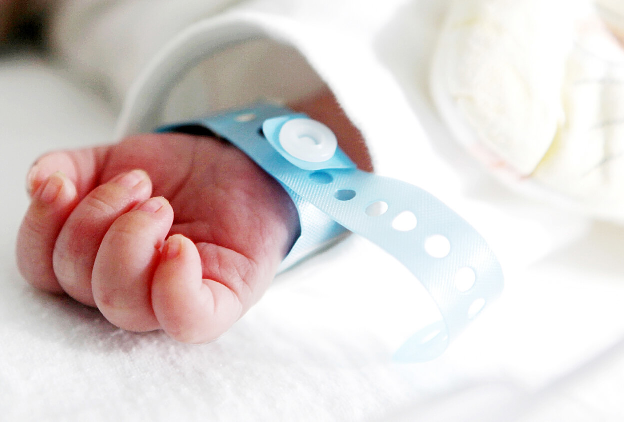
- No win. No fee.
- No hidden costs
- 100% risk-free, only pay if you win
- Home >
- Insights >
- Birth Injuries >
- How can negligence result in Erb’s Palsy?
About the Author
Gillian Gadsby
Medical Negligence Solicitor, Co-founder and Managing Partner - LLB (Hons) University of East Anglia, 1989
Read more about Gillian »Erb’s Palsy is a condition that, depending on the severity of the birth injury, can affect a child for the remainder of its life. It could be relatively minor, such as difficulty gripping small objects or a transient weakness of the arm or hand, or could result in total paralysis of one or both arms.
Each situation is unique, and sometimes the injuries sustained during childbirth are completely unavoidable. However, there are numerous circumstances where an act of negligence by a healthcare provider, either before or during birth, can directly result in the child developing Erb’s Palsy.
Here, we will go into detail about what acts of negligence can lead to Erb’s Palsy and other brachial plexus injuries, and how solicitors investigate these forms of birth injury claims.
Negligence caused by Erb's Palsy
What is Erb’s Palsy?
Erb’s Palsy is a condition caused by damage to the brachial plexus, the network of nerves responsible for the movement and feeling in the shoulder, elbow, wrist and hand.
These delicate nerves consist of thousands of fibres that carry electrical messages between the brain and the muscles. If these are damaged during birth, whether as a result of being stretched, ruptured or severed entirely, this can stop these messages from coming through and prevent the muscles from working properly.
For more information on Erb’s Palsy, read our article discussing its potential long-term impact.
What causes Erb’s Palsy?
There are several ways that Erb’s Palsy can be caused during childbirth, but the most common cause is a challenging or rushed birth. Shoulder dystocia is commonly linked here – this is where one of the baby’s shoulders get stuck against the mother’s pubic bone, putting strain on the brachial plexus as the baby is delivered.
Sometimes this injury is completely unavoidable regardless of what actions the midwives, obstetricians or other professionals take. However, sometimes the injury could have been avoided if those involved in the birth took reasonable steps.
The three primary examples of negligence leading to Erb’s Palsy we will discuss here are:
Failure to recommend a caesarean section
Failure to agree a request for a caesarean section
Mismanaging risks during birth
Failure to recommend a caesarean section
Although it is not an exact science, there are several factors that make shoulder dystocia, and consequently the development of Erb’s Palsy, more likely.
The main factor is the baby being large and therefore too big for the mother’s pelvic opening. This means it is a greater likelihood that the baby’s shoulder will become stuck against the mother’s pelvic bone thereby causing shoulder dystocia.
It is therefore important for healthcare providers to perform all expected antenatal checks to assess whether the gestational size of the baby is larger than they would anticipate. If the baby is likely to be large, they could then recommend a caesarean section as an alternative, removing the risk of the baby becoming stuck during a natural birth. However, not all large babies suffer shoulder dystocia.
There are several other factors that are believed to make a difficult birth more likely:
The mother putting on excessive weight during pregnancy
Maternal diabetes
The mother’s pelvis being abnormal or overly small
The mother gave birth to another child that suffered shoulder dystocia
Again, testing and compiling an accurate medical history should take all of these factors into account, which may influence arranging a caesarean section rather than a natural birth.
Failure to perform these antenatal checks can mean that any signs that would have indicated a greater risk of shoulder dystocia during birth are missed. This may be considered negligent if the birth then results in the child being afflicted with Erb’s Palsy.
Of course, these factors do not always come into play – it is possible for large babies to be born naturally with no issue whatsoever, or for average-sized babies to suffer shoulder dystocia. Nonetheless, these checks should enable the healthcare providers to anticipate the best course of action to present minimal risk to both mother and baby.
Failure to agree a request for a caesarean section
Furthermore, if a mother’s request for a caesarean section is refused, shoulder dystocia is encountered at delivery and the baby then suffers Erb’s Palsy, the healthcare providers involved could be considered negligent.
There are several reasons which a hospital may prefer an expectant mother not to have a caesarean section:
Caesarean sections require an obstetrician and several other professionals involved rather than a single midwife for a natural birth
Caesarean sections require an operating theatre available and take up more resources
Caesarean sections take longer to arrange and complete, and result in longer recovery times for the mother
As a result, it is not uncommon for a mother to be reassured that a natural birth will be suitable, and in many cases this turns out to be accurate. However, if a mother was refused and Erb’s Palsy as a result of shoulder dystocia occurs, then that could be viewed as negligent.
Mismanaging risks during birth
As part of their training, midwives and obstetricians should learn the manoeuvres to perform should they be alerted to the baby suffering from shoulder dystocia during birth. There are a number of actions that they can take should this occur to alleviate the pressure on the baby’s neck and shoulder and cause as little damage as possible:
The McRoberts Manoeuvre
The most widely applied technique to overcome shoulder dystocia, this involves pushing the thighs on the mother outward and towards their chest to widen the pelvis. This is often used in conjunction with suprapubic pressure.
Suprapubic pressure
This is where an attendant will manually attempt to free the baby’s shoulder, either by pressing down on the mother’s lower abdomen or, in more difficult circumstances, placing their hand above the public bone and pushing the shoulder to one side.
The Gaskin Manoeuvre
If the above does not work, the mother may be positioned on all fours with an arched back in order to widen the pelvis even further.
Episiotomy
Where an incision is made in the perineum in order to increase the vaginal opening.
Failing to recognise the occurrence of shoulder dystocia until later than is deemed reasonable, incorrectly applying the above techniques or using excessive force can all be considered examples of negligence. This may then result in the baby suffering brachial plexus damage and consequently develop Erb’s Palsy.
Other examples of substandard medical care during birth that might heighten the risk of Erb’s Palsy include:
Improper use of instruments for delivery such as forceps
Excessive pulling on the arm or shoulder when the baby is delivered face-forwards (aka Occipito Posterior [OP] position or spine-to-spine delivery)
Allowing the babies arms to be pulled backwards during a breech delivery
Rushing the delivery
How do we investigate causes of negligence in Erb’s Palsy claims?
To establish whether the negligence of healthcare providers was at the root of a child being born with Erb’s Palsy, we will gather all appropriate evidence to assess the likely success of a birth injury compensation claim:
Medical records
The mother’s medical records should demonstrate any advice that was given, who was involved in the birth, and what manoeuvres were attempted during the birth to attempt to alleviate the shoulder dystocia.
Expert advice
We instruct an experienced obstetrician for their opinion on whether the care provided by the healthcare provider was appropriate based on what information was available at the time.
Witness evidence
We will always take a detailed witness statement from the mother, birthing partners and anyone else who attended the birth to get an accurate sense of what the healthcare providers did during the birth that could have resulted in injury to the baby.
Talk to our birth injury claim specialists
As you can see, there are numerous circumstances where the inappropriate actions or inactions of healthcare providers can directly influence whether a child is born with Erb’s Palsy, and the extent of the damage done to the child’s shoulder, arm and hand.
At Gadsby Wicks, our specialist birth injury solicitors thoroughly investigate negligence claims brought to our attention to determine whether you have a strong claim. If so, we will work closely with you throughout to help you gain the answers you are seeking and secure the compensation that you deserve.
Get in touch with our team today, or complete our “Do I have a claim?” form to inform us of your situation.
Disclaimer
All content contained within this article is meant for general information only – this should not be treated as a substitute for medical advice from your doctor or another healthcare provider. If you require legal advice specific to your situation, please contact our team directly.
Gadsby Wicks is not liable for any diagnosis made from the content of this article, nor does it endorse any service or external site linked to within the article.
Always consult your GP if you are concerned about your health and wellbeing, or speak to us if you require legal advice.





 Back to top
Back to top
